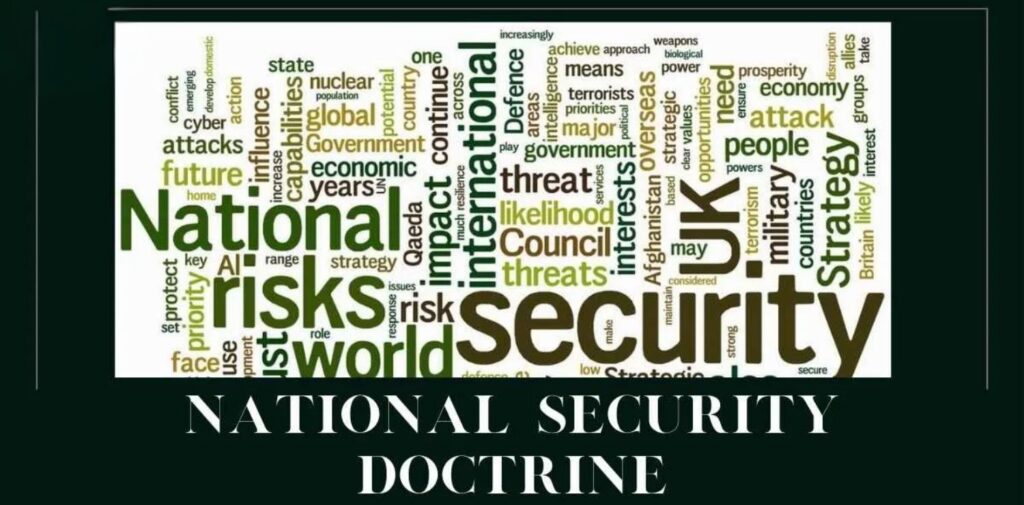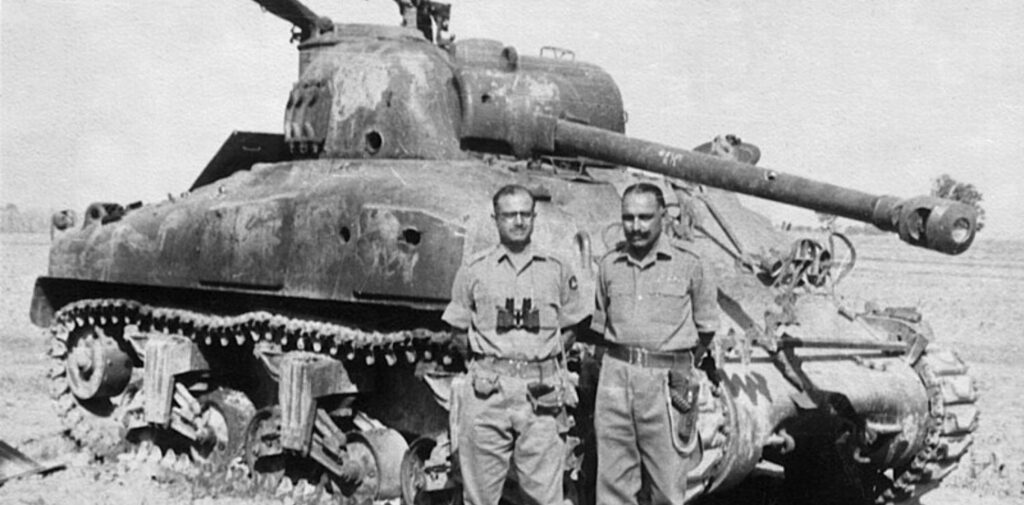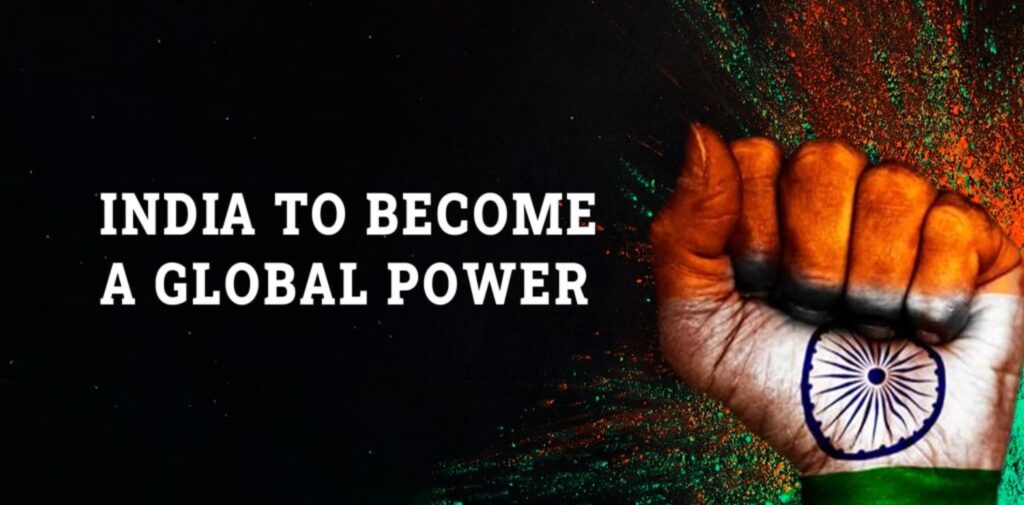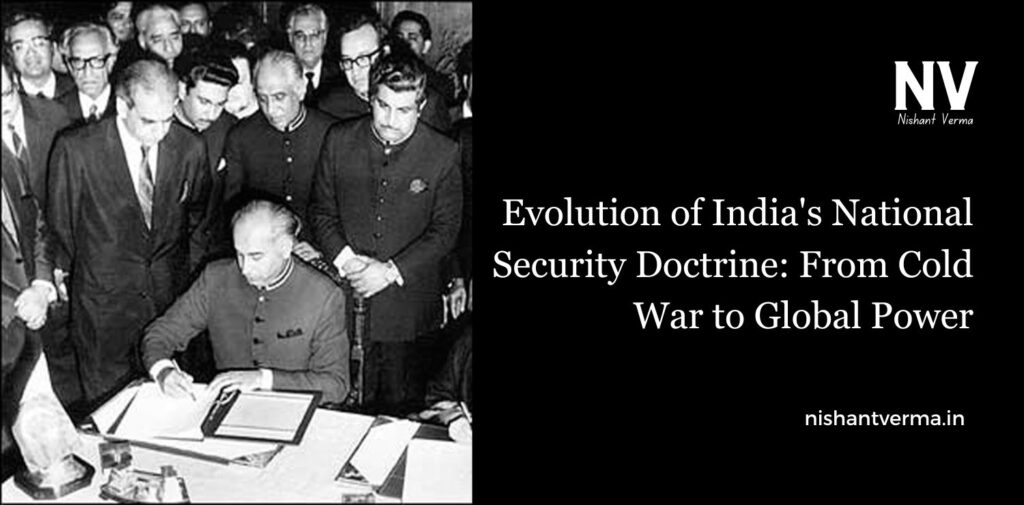India, a vast country with a rich history, has always worked hard to protect its borders and ensure peace within its territory. National security is about keeping the country safe from dangers, both inside and outside. After India gained independence in 1947, its national security became a top priority. The way India thought about and worked on its security has evolved over the years, especially as the world changed from the Cold War to a more connected and globalized world.
Let’s look at how India’s national security doctrine (a plan to protect the country) has developed over time, from the Cold War period to becoming a rising global power.
What is a National Security Doctrine?
Before we dive into India’s history, it’s important to understand what a national security doctrine is. Simply put, a national security doctrine is a country’s strategy or plan to protect itself from threats. This could include threats from other countries (such as wars or attacks) or from internal problems like terrorism or political instability.
India’s national security doctrine has changed over time to respond to different challenges and opportunities. Let’s look at how India’s national security strategy evolved through different periods in history.

India’s Early National Security: 1947-1962
When India became independent in 1947, it faced many challenges. It was a young nation, and its borders were surrounded by countries that were sometimes not friendly. Pakistan, India’s neighbor, was created at the same time as India and had disputes with India, especially over the Kashmir region.
In the first few years after independence, India’s security was focused on its immediate neighbors, like Pakistan and China. India was also trying to establish itself as a stable country after the hardships of British rule and the Partition (the dividing of India and Pakistan).
The Cold War Influence: During the Cold War (1947-1991), the world was divided into two groups. On one side were the United States and its allies, and on the other were the Soviet Union and its allies. India, under the leadership of Jawaharlal Nehru, chose to remain non-aligned. This means that India did not join either of the two groups and tried to stay neutral in the global competition. While India was focused on economic development, it was also wary of potential threats from both the US and the Soviet Union.
India’s national security strategy during this time was more about building the nation internally, improving the economy, and ensuring stability within its borders. India’s military was small, and the country focused on diplomacy to solve problems with neighbors, although tensions with Pakistan and China continued to grow.
The India-China War: 1962
One of the biggest challenges to India’s national security came in 1962 when India fought a war with China. This war was fought over a border dispute, and India was not prepared for it. China’s sudden attack showed India that it needed to improve its defense capabilities and rethink its national security strategy.
The defeat in the 1962 war was a turning point. It made India realize that it needed to strengthen its military forces and build better relationships with other countries. The loss to China also led India to focus more on defense and increase its military readiness, which changed how India looked at its national security.

The 1965 War with Pakistan and Strengthening Defense
In 1965, India fought another war, this time with Pakistan, over the Kashmir region. This war ended in a ceasefire, but it showed India that it needed to be more prepared for possible conflicts with its neighbors. After the war, India focused on improving its military and defense technologies. This was the time when India began to invest in building a strong army, air force, and navy to protect the country’s borders.
India also worked on creating alliances with other countries and gaining international support to strengthen its security. The Indo-Pakistani wars of 1965 and later the 1971 war played a key role in shaping India’s approach to security.
Nuclear Weapons: The 1970s and 1980s
The 1970s and 1980s were crucial decades for India’s national security. During this time, India decided to develop nuclear weapons. India’s leaders believed that having nuclear weapons would make the country stronger and give it the power to defend itself against any foreign threats, especially from neighbors like China and Pakistan, who were also developing their own nuclear capabilities.
In 1974, India successfully tested its first nuclear bomb, called Smiling Buddha. This was a major moment in India’s history and marked the country as a nuclear power. However, India’s leadership did not use the nuclear bomb as a tool for aggression; instead, it was seen as a deterrent—meaning India would only use its nuclear weapons in self-defense, not to attack others.
The Post-Cold War Era: 1990s and Beyond
The end of the Cold War in 1991 was another turning point in the world’s security dynamics. The collapse of the Soviet Union and the rise of the United States as the world’s leading superpower changed the way countries looked at security. For India, the 1990s brought new opportunities and challenges.
- The Kargil War of 1999: One of the most significant events in India’s post-Cold War security history was the Kargil War with Pakistan in 1999. In this war, Pakistan tried to take control of Indian territory in the Kargil region of Kashmir. India’s victory in the war showed the country’s military strength and its ability to defend its borders. After the Kargil War, India became more focused on modernizing its military and defense systems to prepare for any future conflicts.
- Economic Growth and Globalization: The 1990s also saw India’s economy grow rapidly. This economic strength helped India improve its defense capabilities. As India became an economic powerhouse, its security concerns also grew. India started to play a more active role in international politics, especially in Asia and the rest of the world.
- Building Relationships with the United States: As the world became more globalized, India also began to form closer relationships with countries like the United States. In the early 2000s, India and the US signed several agreements to cooperate on defense, trade, and security. India’s rise as a global power made it an important player in world politics.

India’s Role as a Global Power: Today
Today, India’s national security doctrine has become more comprehensive and strategic. India no longer just focuses on threats from neighboring countries. It also looks at global issues like terrorism, cyber threats, and regional conflicts. India has made significant progress in its defense technology, with advanced missile systems, fighter jets, and naval forces.
India is also an important player in global organizations like the United Nations, and it has become more involved in maintaining peace and security around the world. India participates in peacekeeping missions and works with other countries to fight terrorism and prevent conflicts.
India’s security doctrine now includes not only military strength but also economic power, diplomacy, and cooperation with other nations. The country is working to secure its place as a global leader, focusing on both regional and international security issues.
Conclusion: A Strong and Secure Future
India’s national security doctrine has come a long way since independence. From focusing on internal stability and diplomatic relations in the early years to becoming a nuclear power and a global player in the 21st century, India has adapted its security strategy to the changing world. Today, India is a rising global power, balancing its military strength with its role in international diplomacy, trade, and global peacekeeping.
As India continues to grow and develop, its national security strategy will continue to evolve to meet the new challenges of the modern world. From the Cold War era to today, India has proven that it is ready to protect its sovereignty and contribute to global peace and security.




